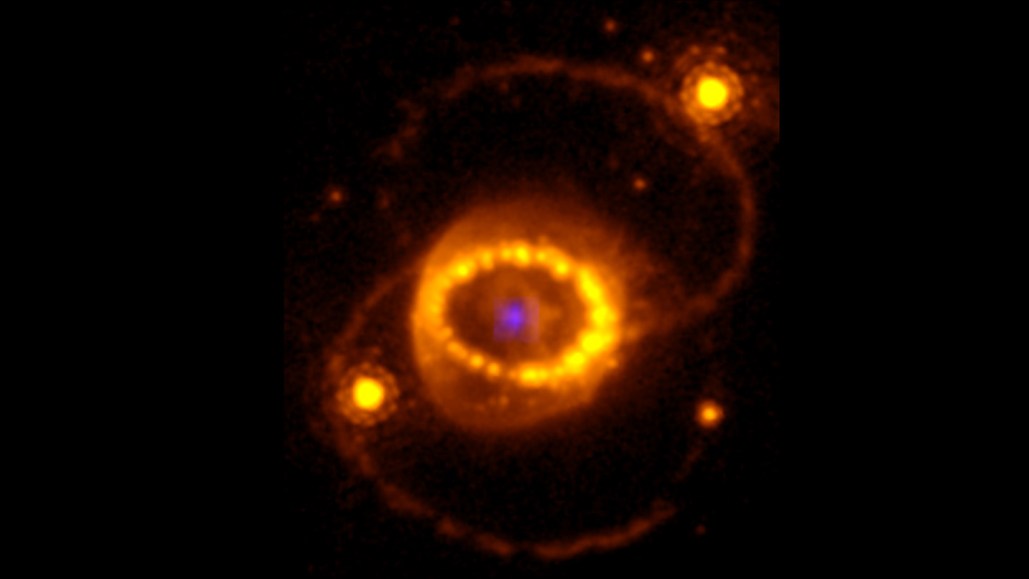JWST detects remnants of a neutron star from supernova 1987A

Astronomers have discovered solid evidence of an elusive neutron star within the remnant dust cloud of supernova 1987A, the most well-known stellar explosion of our time.
This discovery was made possible through the James Webb Space Telescope from NASA, which has detected potential signals of a strong X-ray source, presumably a neutron star, emanating from the heart of the supernova remains. These results, published on February 22 in Science, shed light on the ongoing 37-year-old probe into the outcome of the nearest supernova observed in almost four centuries, and could boost understanding of the early behavior of neutron stars.
Patrick Kavanagh, an astronomer, during a news conference at the American Association for the Advancement of Science gathering in Denver on February 17, stated that the supernova 1987A is a remarkable test site for studying supernovas. He highlighted the persistent nature of its contribution to new findings. Kavanagh is affiliated with Maynooth University in Ireland.
Supernova 1987A came to light in the Large Magellanic Cloud on February 23, 1987, fascinating astronomers worldwide with its stunning display. This kind of explosion is triggered by the death of a star with at least eight times the mass of our sun. Given its proximity to us, only 160,000 light-years, the supernova 1987A was visible to the naked eye for months. The bursting event created massive neutrinos, with some detected on Earth, marking the first sighting of these ethereal particles originating outside our solar system.
This led scientists to wonder whether the iron core of the original blue supergiant star, which gave rise to 1987A, shrunk either into an extremely dense neutron star or all the way down to a black hole. Indications of neutrinos escaping the event tip towards the likelihood of a neutron star, but conclusive evidence has been elusive, largely due to dust haze created by the ejection of the star's outer layers at a speed of 10,000 kilometers per second, blocking the view.
The infrared capabilities of the James Webb Space Telescope are ideal for examining the cloud encircling 1987A, as infrared light can penetrate dust more effectively than other forms of light. By utilizing the telescope, Kavanagh and his team managed to detect the presence of argon and sulfur in the dust cloud's core. Significantly, these elements had been ionized, with some of their electrons stripped away.
Claes Fransson, a co-author of the study and an astronomer at Stockholm University, stated that a source of high-energy X-rays is required to create such ions, prompting the question, what is causing this ionization?
The researchers propose two potential answers: Either the remnants of supernova 1987A contain a pulsar, a heavily magnetized neutron star emitting powerful radiation, similar to the one discovered in the nearby Crab Nebula; or the X-rays might be originating from an ordinary neutron star, whose raw surface could reach temperatures up to a million degrees Celsius.
Aravind Pazhayath Ravi, an astrophysicist at the University of California, Davis, who was not part of the research team, believes this study to be some of the most conclusive indirect proof of a neutron star's presence. Though it isn't a direct detection yet, the research complements past data accumulated by instruments like the Atacama Large Millimeter/submillimeter Array.
If scientists manage to capture light directly emanating from the neutron star, comparative analyses against older neutron stars seen across the cosmos versus a newly formed one could offer insights into the internal structure of such extraordinary phenomena. For this to happen, the dust cloud around the remains of 1987A would need to clear up more, which Ravi expects to happen in roughly a decade.
He predicts that we'll eventually capture an image of the youngest neutron star ever observed.




